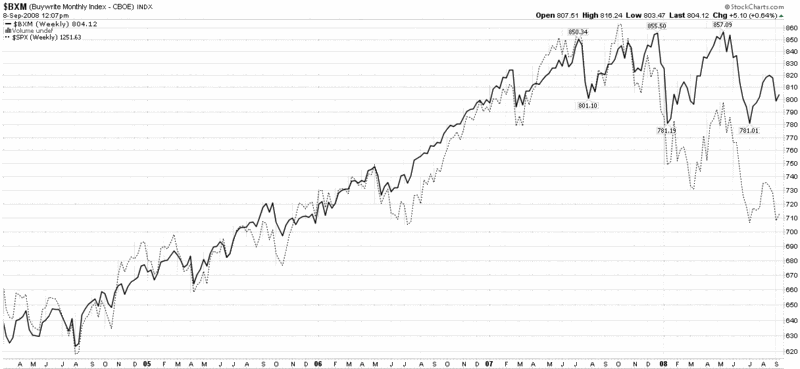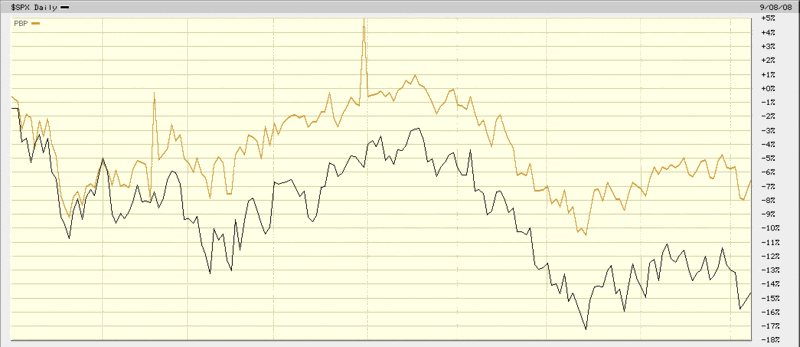The Value of Selling Covered Calls
One subject that gets less attention than it deserves is the value investors can extract from selling covered calls. To be fair, a covered call strategy sacrifices what can sometimes be considerable upside in exchange for a fixed return, but this can be a highly effective strategy in a range-bound market.
The chart below is a weekly chart that shows the CBOE S&P 500 Buy-Write Index (BXM), which is designed to replicate a buy-write or covered call strategy for the S&P 500 Index. Note that during the recent bull market, a buy-write strategy resulted in roughly the same returns as owing the SPX, but with less volatility.
[source: StockCharts]
More importantly, over the course of the last year, a buy-write strategy has significantly outperformed the SPX. The details can be seen in the next chart, where a relatively new ETF, the PowerShares S&P 500 BuyWrite Portfolio (PBP) has lost value at less than half of the rate of the losses in the SPX.
In sideways markets, in down markets, and even in up markets, a buy-write or covered call approach like that of the PBP (or first cousins BEP and MCN) can be an excellent way to increase returns and reduce risk.

[source: BigCharts]


5 comments:
Covered call writing is a strategy with a bullish bias, but I highly recommend it for investors who are first learning to use options.
Thanks for including this topic in you excellent blog.
I usually stay away from covered calls because the premium seems too little to be locked in position for the time left.
However, pretty much everytime I've seen decent premiums and gone for the covered calls I've regretted it because I missed out on a much greater profit.
I suspect if the call premium looks too good, then it means the upside is the path of least resistance.
Marc
If you absolutely have to be long the dollar and an index fund. Buy and write is the way to go in this market.
Bill,
We do extensive covered call selling, publish lists of the "Most attractive" call-writes, and track our results. Over the past three years and ~2,471 recommended writes, we have seen the underlying stock stay below the upside breakeven (strike plus premium) 83% of the time with an alpha of +4.65%. The flipside is that the negative alpha for capping some big returns is around -10.5%. Still, we think the strategy adds to a Sharpe ratio and can improve upon the results seen in the BXM approach by a) not covering the entire index, and b) picking the higher vol sectors. I wonder how using the VIX as a signaling tool might improve further on being able to decide to be covering more or less of a portfolio given VIX levels? Perhaps a future post?
Bill, the Wall Street Journal ripped off your article this week! Cheers, Jeff
Post a Comment